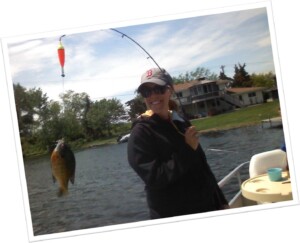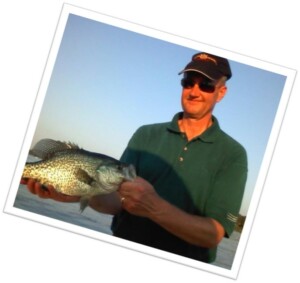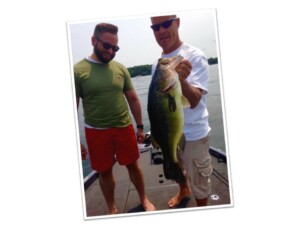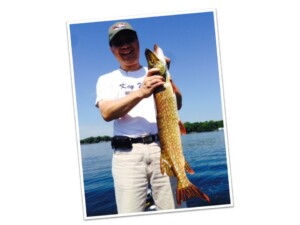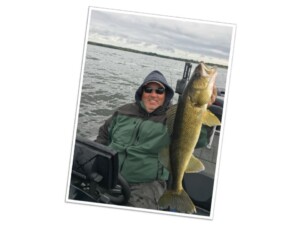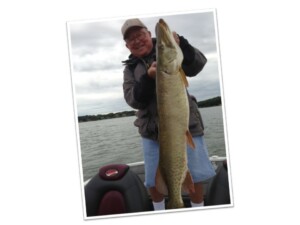A Guide to Fishing Historic Lake Minnetonka
Lake Minnetonka! A true gem for fishing. Here’s a guide to help you learn how to fish Lake Minnetonka and hook into some memorable catches on its beautiful waters:
Understanding Lake Minnetonka
First off, let’s get acquainted with the lake itself. It’s a large, sprawling lake with numerous bays, channels, and islands. This diverse structure means it holds a variety of fish species and offers different fishing experiences depending on where you are on the lake. Key species you’ll likely be targeting include:
Muskellunge (Musky): The apex predator, known for its size and fight.
Northern Pike: Another aggressive predator, often found in weedy areas.
Largemouth and Smallmouth Bass: Popular sport fish offering exciting action.
Walleye: A prized table fare, often found in deeper waters.
Sunfish (Bluegill, Pumpkinseed): Abundant and great for family fishing.
Crappie (Black and White): Schooling fish that can provide fast action.
Yellow Perch: Another schooling fish, good for eating.
When to Go: Seasonal Considerations
The time of year significantly impacts fish behavior and where you’ll find them:
Spring (Ice-Out to Early June): As the water warms, fish become more active after the winter. Look for walleye and northern pike in shallow bays and near spawning areas. Bass will start moving into shallower water to prepare for spawning. Panfish will also be active in warmer, protected areas.
Summer (Late June to August): Fish tend to move deeper to find cooler water. Focus on weed lines, drop-offs, and submerged structures for bass, walleye, and pike. Musky fishing can be productive, especially in the early morning or late evening. Panfish will often be found around docks and weed beds.
Fall (September to Ice-Up): As water temperatures cool, fish become more active again, feeding up for winter. Walleye often move shallower in the evenings. Musky fishing can be excellent as they become more aggressive. Bass will also be feeding actively before the cold sets in.
Winter (Ice Fishing): Lake Minnetonka freezes over, offering ice fishing opportunities for walleye, northern pike, crappie, and sunfish. Always check ice conditions with local authorities before venturing out.
Where to Fish: Key Habitats
Lake Minnetonka’s diverse structure provides various habitats that attract different fish:
Weed Beds: Excellent for northern pike, bass, and panfish. Look for healthy green weeds.
Rocky Points and Shorelines: Often hold smallmouth bass and walleye.
Submerged Humps and Bars: Can be hotspots for walleye and bass. Use electronics to locate these underwater structures.
Drop-Offs: Areas where the bottom quickly slopes from shallow to deep water. These can hold a variety of fish, especially walleye and bass.
Docks and Piers: Often attract panfish seeking shelter and food.
Channels and Bridges: Can concentrate fish moving between different parts of the lake.
Gear and Tackle
The right gear will make your fishing experience more enjoyable and successful:
Rods and Reels:
Musky/Pike: Sturdy baitcasting rod (7-9 feet) with a high-capacity reel and strong line (65-100 lb braid).
Bass: Medium to medium-heavy spinning or baitcasting rod (6-7.5 feet) with 10-17 lb fluorocarbon or monofilament line.
Walleye: Medium-light to medium spinning rod (6-7 feet) with 6-10 lb line.
Panfish: Light action spinning rod (5-7 feet) with 4-6 lb line.
Lures and Baits: A well-rounded tackle box should include:
Musky: Bucktails, jerkbaits, crankbaits, topwater lures.
Northern Pike: Spoons, spinners, jerkbaits, large soft plastics.
Bass: Jigs, plastic worms, crankbaits, spinnerbaits, topwater lures.
Walleye: Jigs, live bait rigs (leeches, minnows, nightcrawlers), crankbaits.
Panfish: Small jigs, ice flies, live bait (worms, waxworms, small minnows).
Electronics: A fish finder (sonar) is invaluable for locating fish and understanding bottom structure, especially for walleye and bass fishing in deeper water. GPS can help you mark productive spots.
Other Essentials: Net, pliers, line cutters, measuring device, appropriate clothing, sunscreen, insect repellent, and a valid Minnesota fishing license.
Fishing Techniques
Different species and conditions call for different techniques:
Casting: Effective for targeting bass, pike, and musky around visible structure like weed beds and docks.
Trolling: A good way to cover water and target walleye, musky, and pike in open areas or along drop-offs.
Jigging: A versatile technique for walleye, bass, and panfish, especially around structure or in deeper water.
Live Bait Rigs: Effective for walleye, using leeches, minnows, or nightcrawlers on various rigs like Lindy rigs or slip bobbers.
Bobber Fishing: A classic technique for panfish and can also be used for walleye and pike in certain situations.
Regulations and Ethics
Minnesota Fishing License: Ensure you have a valid fishing license. Regulations vary, so check the Minnesota Department of Natural Resources (DNR) fishing regulations handbook for size limits, possession limits, and any specific rules for Lake Minnetonka.
Boating Regulations: If you’re using a boat, be aware of all boating regulations, including speed limits, no-wake zones, and safety equipment requirements. Lake Minnetonka can be busy, especially on weekends.
AIS (Aquatic Invasive Species): Take precautions to prevent the spread of invasive species. Clean and drain your boat and equipment before and after entering the lake.
Catch and Release: Consider practicing catch and release, especially for larger fish like musky and trophy-sized bass, to help maintain healthy populations. Handle fish carefully to ensure their survival.
Respect the Environment: Avoid littering and be mindful of the lake’s ecosystem.
Local Knowledge and Resources
Local Bait Shops: These are invaluable resources for up-to-date information on what’s biting, where, and what baits are working. They can also provide local tips and advice.
Fishing Reports: Check online fishing reports for Lake Minnetonka to get a sense of recent fishing activity.
Local Guides: Hiring a local fishing guide can significantly shorten your learning curve and put you on fish, especially if you’re targeting a specific species or unfamiliar with the lake. Dan Jasper of Jasper Guide Services is one of the most experienced guides on the lake. He has a passion for helping people learn how to catch fish.
Enjoy Your Time on the Water!
Lake Minnetonka offers a fantastic fishing experience with its diverse fish populations and beautiful scenery. Be patient, persistent, and respectful of the lake, and you’re sure to have some memorable days on the water. Good luck and tight lines!


